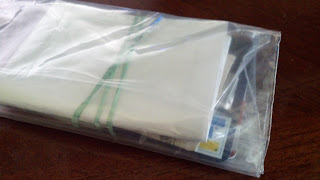I recently read Abandoned Ship: An intimate account of the Costa Concordia
Shipwreck by Benji Smith. Cruises are a pretty safe way to travel
considering that for the millions of passengers who sail annually; there are
only a handful of incidents and very, very few fatalities. Usually the biggest
thing you have to worry about is getting sick from some bug another passenger
brought onboard with them.
Although I’ve been unable to find a recent, precise
statistical analysis, the anecdotal evidence would suggest that cruises are
among the safest forms of transportation around, although just how safe is a
bit of a challenge to determine since most ships are not domiciled in the U.S.
and it is difficult to find collective reports of incidents at sea, since
different regulatory bodies have varying reporting requirements. Still, it is
worthwhile to consider the appropriate course of action should a disaster
befall your ship at sea. Or any disaster while travelling – what if you’re
separated from all of your stuff because of a riot, a fire, a bombing, a flood,
or any of a hundred other bad things that happen every day around the world?
One of the things that struck me in reading Smith’s
account of the Costa Concordia mishap is that many of the passengers were not
in their staterooms or able to go back to them to retrieve items of importance
when the ship began to sink. They evacuated with the clothes on their backs,
formalwear in some cases – no money, no passport, no credit cards, no cell
phones - maybe even wearing high heels. Once their harrowing experience of getting safe was over, they had the
utter vulnerability of being stranded with little means of helping themselves.
So this got me to thinking, what would be the minimum
essentials that could easily be kept on one’s person at all times in the
(extremely unlikely) event of an emergency at sea? Not in your purse or
backpack, but on your body?
Here’s what I came up with:
- A credit card
- Some cash - $100 or so
- An international calling card
- Color photocopy of passport and driver’s license
- Phone numbers for:
Your travel insurance emergency assistance department
U.S. Embassies in every country that you will be visiting
Your hometown bank branch
Your travel agent
Airline phone number and flight numbers
Any other important telephone contacts
(Typed, all of these will fit onto a piece of paper the
size of a credit card)
Put these “essentials” together and rubberband them, then
put into a ziploc bag. This is your In Case of Emergency (ICE) Kit. If you have
a medically necessary prescription, then I’d also include at least 2 days worth
of pills and the name and dosage in the ICE-kit.
Smith describes trying to get to the Embassy, prove his
identity, and procure necessary documentation to get home – all very difficult
to do if you have no cash, no ID, and don’t have anyone’s phone number
memorized who may be able to help you.
Having an ICE kit would be a good idea for all travelers
to foreign places, not just if your cruise ship sinks. If your wallet gets
ripped off and your ICE kit is in a harder to get to location, like an inside
pants or jacket pocket, you’re saved from being completely screwed. The key is
to have your ICE kit with YOU and not with your stuff. In order to do this, it
needs to be small and easy to carry. Onboard a cruise ship if I was enjoying a
formal dinner, I would probably have it in my clutch, but if we needed to
muster, you better believe I’m slipping that sucker into my bra. Out and about
in a foreign country, my ICE kit is on my person and not with my other money
and identification. It will do me no good if my “Emergency” happens to be that
my purse was stolen and my In Case of Emergency kit was in it!
I’d also suggest that each adult have an ICE kit and
include the information on traveling companions in case you were separated from
your group.
Sure the ICE kit may be something I never use (I sure
hope so!) but I’d rather have it and not need it than the other way around. As
for getting sick from the other passengers – wash your hands, a lot. Oh and it
isn’t in my ICE kit, but I do bring a few Clorox wipes in a Ziploc bag and go
over the surfaces in my stateroom – phone, remote, light switches, etc. just in
case…


